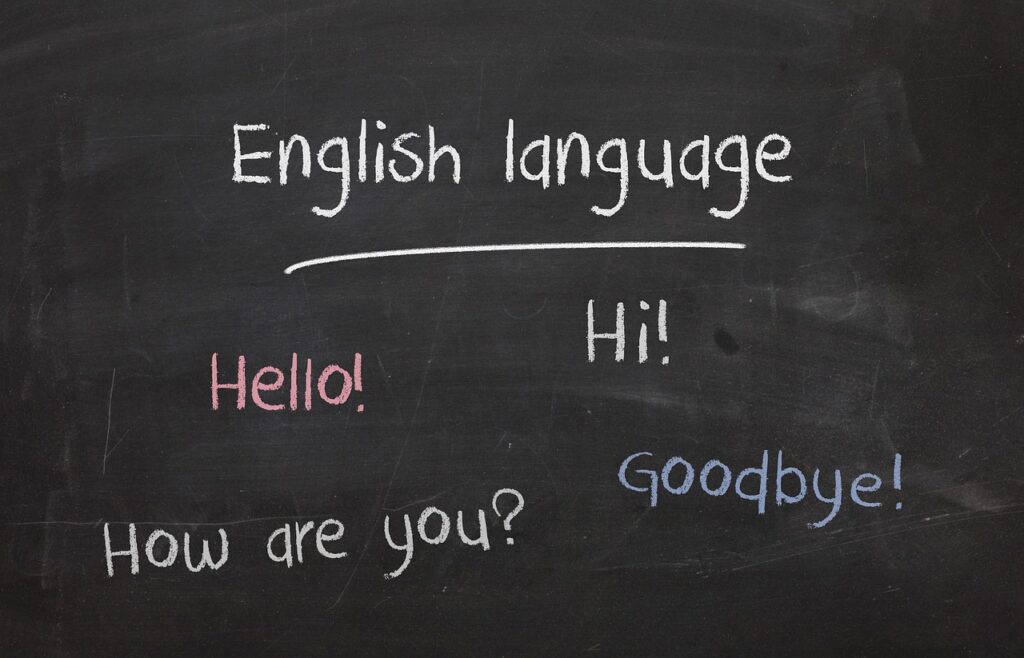Key takeaways
- An increasing number of adults and children are being diagnosed with communication disorders every year.
- A bachelor’s degree in communication sciences and disorders is a pre-professional degree.
- To obtain a license for clinical practice as a speech therapist or audiologist, a master’s degree, relevant certifications, and a state-issued license are necessary.
- Here, you will learn about the types of communication disorders, causes, symptoms, and their treatments.
- Colleges offering an on-campus bachelor’s in communication sciences and disorders include Grand Canyon University, University of Central Florida, Texas State University, and more.
- Pursue an online program in the field from Maryville University, Utah State University, University of Florida, or others listed in the guide.
- Graduates can pursue jobs such as Assistant Audiologist, Assistant Speech Language Pathologist, and so on.
Nearly 1 in 12 children suffer from communication disorders such as voice, speech, and language, as per the finding published by The National Institute on Deafness and Other Communication Disorders. The report also highlights that 35.4% of children aged 3 to 10 have multiple communication and swallowing disorders, and 25.4% of children aged 11 to 17 have at least a couple of disorders.
With a formal education in communication sciences and disorders, you can learn to identify and treat communication disorders. Here, you will find program details, colleges offering a communication sciences and disorders programs, career opportunities, salary information, and more.
What is communication disorder?

A communication disorder is any type of disorder that affects a person’s ability to listen, comprehend, hear, and apply language to respond to communicative efforts. These include verbal, non-verbal, graphics, and symbolic communication. According to the American Speech Language Hearing Association (ASHA), around 5 to 10% of all Americans suffer from some sort of communication disorder.
There are many reasons why one develops a communication disorder. Some include neurological damage to the brain due to a stroke, genetics, environmental issues, or brain development problems. Environmental factors, family life, social interactions, and more can also have an effect on speech and communication development.
According to a 2012 study by the Center for Disease Control and Prevention (CDC), 8% of children aged 3 to 17 had some form of communication disorder. Latest studies reveal that these numbers have grown drastically, especially since COVID. If you aspire to pursue a career in communication disorders, a formal education in the form of a college education is the ideal first step.
What is a communication disorders degree?
A communication disorders or a communication sciences and disorders degree is the study of the human communication process. It includes studying language, speech, hearing, and swallowing processes, as these generally govern the communication process. Moreover, the program also takes a look at the contribution of genetics, neurology, environmental factors, exposure, and so on.
Aspiring professionals can pursue a degree in the field at varying levels, starting from an associate and extending to a PhD.
Associate’s degree in communication disorders
At the undergraduate level, an associate degree is the shortest program you can pursue. It is a two-year program featuring a foundational curriculum in communication sciences and disorders. Through an associate program, students develop basic skills, enabling them to take on supportive entry-level roles in the field of communication disorders.
An associate degree also prepares aspiring professionals for an accelerated bachelor’s degree, making them eligible to join from the fifth semester onwards, provided they have transferable credits.
Bachelor’s degree in communication disorders
A bachelor’s degree in communication sciences and disorders offers a more comprehensive curriculum and scope of learning in the field of communication disorders. The program focuses on equipping aspiring professionals with the skills and knowledge needed to lead a successful career in the field. It is a four-year program featuring a blended curriculum of theoretical classes, experiential learning opportunities, and several opportunities for hands-on learning.
Communication sciences master’s program
A master’s program is an advanced degree ideal for those who want to enhance available career opportunities and become eligible for promotions and managerial-level positions. Through a master’s program, you can develop niche-specific skills, including leadership and project management. Master’s program lasts anywhere between 1 to 3 years, depending on whether you enroll as a full-time or part-time student.
Doctoral degree in communication sciences and disorders
A doctoral degree, also known as a PhD in communication disorders, is the highest level of education you can pursue in the field. Doctoral programs are research-intensive, requiring students to conduct and publish independent research to earn the degree. The program lasts 3 to 5 years, depending on how long the research takes. Doctoral degree holders become eligible for roles in academia, specifically in research and college-level teaching jobs.
Bachelor’s degree in communication disorders – program details

Aspiring professionals hoping to develop a strong set of skills and comprehensive competencies in the field of communication disorders. It is a pre-professional degree that is essential for aspiring professionals wishing to practice as speech-language pathologists or audiologists. Through the bachelor’s program, students undertake a variety of courses covering topics in audiology, spectrum disorder, bilingual language development, traumatic brain injuries, and more.
At the bachelor level, you can either pursue a bachelor of science in communication sciences and disorders or pursue a communication disorders major in a bachelor of health sciences such as a behavioral health science program. Depending on the program you pursue, you will be required to take general education and major-specific courses and electives.
Program curriculum
Program curriculum and available courses and subjects vary by college depending on faculty expertise and program focus. However, the topics covered in a communication disorders degree are generally the same. Generally, students have to complete 120 credit hours for a bachelor’s degree in communication disorders. These credits are distributed between general education, major-specific courses, and electives. While the general education or university core and electives generally vary, here are some options you may come across in a bachelor’s degree in the field.
General Education
- Introduction to Chemistry
- General Psychology
- Introduction to Statistics
- Elementary Physics
- Quantitative Methods
- College Algebra
- Introduction to Public Speaking
- Health Information Management
Core Courses
Here are some examples of core-specific courses you may come across in a bachelor’s degree in communication disorders.
- Introduction to Communication Disorders
- Phonetics
- Phonological Assessment and Intervention
- Clinical Methods in Communication Disorders
- Child Language Development
- Language Science
- Basic Audiology
- Acquired Communication Disorders
- Aural Rehabilitation
- Developmental Communication Disorders
- Anatomy and Physiology of Speech Mechanisms
- Clinical Methods
Electives and Cognate Areas
Electives and courses in cognate areas serve as secondary majors or complementary subjects that enhance a student’s understanding of their primary area of study. Here are some courses you may come across in a communication disorders degree.
- Management of Speech Sound Disorders
- Deaf Culture
- Neural Bases of Cognition and Communication
- Psychology of Adolescent Development
- Principles of Sociology
- Medical Terminology
- Motor Learning and Control
- Musical Acoustics
- American Sign Language
- Historical and Current Perspectives of Interpreting
Concentration areas in communication disorders
In a communication sciences and disorders program, concentration tracks are generally not available at the bachelor level as it is a pre-professional degree. If you want to pursue job roles in the field, such as a speech therapist or language development specialist, you will have to undertake relevant courses to build niche-specific skills, allowing you to gain professional experience in relevant areas.
Speech disorders
Speech disorders are a form of communication impairment, making affected unable to speak normally, clearly, and/or fluently. The most common forms of speech disorders include stutters and lisps, also known as fluency disorders. Another widely known speech disorder, thanks to the popular sitcom Big Bang Theory, is selective mutism. Selective mutism is characterized as an individual’s inability to speak in certain situations and among certain groups.
Additionally, these include the inability to pronounce certain sounds, poor voice quality, substituting or omitting sounds, and so on. Courses you can take to develop comprehensive competencies in speech disorders include:
- Speech and Language Acquisition and Development
- Acoustics for Speech and Hearing
- Anatomy and Physiology of the Speech Mechanism
- Management of Speech Sound Disorders
Neurogenic communication disorders
Traumatic brain injuries, strokes, brain tumors, neurological diseases such as Alzheimer’s, Dementia, and so on can all be causes of communication disorders. Examples of communication issues include difficulty forming complete sentences, repeating sentences, difficulty putting thoughts into words, omitting words from sentences, and so on. Here are some courses you can take to build a comprehensive knowledge base in the subject:
- Introduction to Cognitive Science: Minds and Brains
- Introduction to Neuroscience
- Neural Bases of Cognition and Communication
- Physiological Psychology
Voice disorders
Voice disorders are also essentially speech disorders, as voice is an essential component of speech. However, a voice disorder specifically affects the tone, pitch, volume, and quality of voice, all of which impact the quality of communication. A low-pitched or extremely hoarse voice is often hard to comprehend, rendering a person incapable of proper communication. Those aspiring to become voice disorder specialists can pursue the following courses to build a wide knowledge base:
- Human Anatomy and Physiology
- Introduction to Audiology
- Acoustics for Speech and Hearing
- Management of Speech Sound Disorders
Hearing disorders
Hearing disorders are characterized as a person’s inability to hear sounds either completely or partially. These also include auditory sensitivity, sudden hearing loss, auditory integration where there is a delay between what is heard and what is seen, and more. Some types of hearing disorders are by birth, while others are a result of external or internal factors and other conditions. Here are some courses aspiring hearing disorder specialists can take to build relevant expertise:
- Acoustics for Speech and Hearing
- Deaf Culture
- Aural Rehabilitation
- Introduction to Audiology
Admission requirements
To secure admission in a bachelor’s degree in communication sciences and disorders, the admission requirements are quite specific as this is a specialized field of study. The exact admission requirements vary by college, but to give you an idea of what those are, here are the admission requirements for a communication disorders bachelor as listed by the University of Florida.
High school graduates
Those applying after high school graduation must fulfill the following requirements:
- A minimum cumulative GPA of 2.5, Grade C in their high school transcripts as required by the State of Florida – University of Florida applicants have an average CGPA of 3.7
- High school diploma or a General Education Development equivalent.
- 14 earned credits distributed as follows:
- 4 years of Mathematic
- 4 years of English
- 3 years of Natural Sciences with 2 years of lab minimum
- 3 years of Social Sciences
- 2 years of a foreign language – desirable, not mandatory
- Standardized test scores for high school graduates who graduated less than five years ago.
- For SAT:
- Math: 480
- Reading and Writing: 490
- ACT
- Reading: 19
- English: 17
- Math: 19
- Classic Learning Test:
- Verbal Reasoning + Grammar + Writing: 38
- Quantitative Reasoning: 16
- For SAT:
Additionally, a student may have to clear a speech-hearing screening exam to be enrolled in the program.
Associate degree holders
It is also important to note that the admission requirements for associate degree graduates applying to bachelor’s programs are quite different. Students must not only have at least 60 transferable credits but also have completed the required subjects.
However, those with fewer than required transferable credits or those who fall short of the specific subject requirements may be able to enroll in a preparatory year. Make sure you check with the admissions office to determine eligibility and the best way forward before sending in your application. The same goes for students transferring from another program or students applying for a second bachelor’s degree.
Graduation requirements
Graduation requirements often vary by program. For a communication disorders bachelor program, students will have to complete 120 credits as distributed between university core, major-specific, and electives. Additionally, they must also satisfy minimum score requirements in each subject. Generally, a grade of C is required to clear a particular course or subject, which means that a minimum CGPA of 2.5 is required to graduate from the program.
Moreover, completion of a capstone project and fulfillment of experiential learning requirements such as an internship are also included in the graduation requirements. For a communication disorders degree, colleges may also require that students be able to demonstrate skills learned to earn their degree.
Make sure you carefully browse through the graduation requirements before enrolling in a program or selecting courses. You can also seek advice from a counselor or a teacher to create the optimal degree learning map.
Colleges offering a bachelor’s degree in communication disorders

Here is a list of colleges from where you can pursue a bachelor’s degree in communication sciences and disorders.
| College | Acceptance % | Graduation % | Tuition |
| Grand Canyon University | 78% | 47% | $17,450 |
| Utah State University | 94% | 53% | $9,228 in-state
$24,802 out-of-state |
| Bowling Green State University | 79% | 60% | $14,081 in-state
$22,070 out-of-state |
| University of Central Florida | 41% | 76% | $6,368 in-state
$22,467 out-of-state |
| Emerson College | 43% | 82% | $55,392 |
| California State University at Fullerton | 67% | 69% | $7,073 in-state
$18,953 out-of-state |
| University of Texas at Tyler | 65% | 61% | $9,920 in-state
$25,198 out-of-state |
| Texas State University | 88% | 54% | $11,450 in-state
$23,210 out-of-state |
| Northern Illinois University | 71% | 48% | $12,700 |
| Mercy University | 86% | 61% | $22,106 |
Colleges offering a communication sciences and disorders online degree
Several colleges and universities in the US also offer an online communication disorders bachelor’s degree. Here is a list of institutions from where you can pursue an online program.
| College | Acceptance % | Graduation % | Tuition |
| University of Florida | 23% | 88% | $6,381 in-state
$28,659 out-of-state |
| University of Montana | 95% | 42% | $8,152 in-state
$31,622 out-of-state |
| Abilene Christian University | 66% | 61% | $42,380 |
| Utah State University | 94% | 53% | $9,228 in-state
$24,802 out-of-state |
| Maryville University | 88% | 71% | $27,166 |
Is an online degree in communication disorders worth it?
An online program offers several unique benefits when compared to a traditional program. However, whether it is worth pursuing an online degree or not largely depends on an individual’s personal preferences. Here, we bring you the advantages and disadvantages of an online communication sciences and disorders degree so you can make an informed decision.
Advantages of an online program
Let’s start with the good first! The most prominent benefit of an online program is the ease of accessibility it offers. A virtual learning program removes geographical barriers by allowing students from anywhere in the world to join the program and access high-quality education.
Secondly, it proves to be a much more affordable option than traditional on-campus programs. Online students don’t need to account for travel, accommodation, visa costs, visa renewals, or utilities. They just pay the tuition and minor fees for technical support and the like.
Students are in charge of their own schedules, especially those in an asynchronous program. Even those in a synchronous program have more free time than those attending an on-campus program, as they don’t have to travel.
Disadvantages of an online program
A virtual learning program is not for those who aren’t self-motivated or great at time management. Additionally, distance education can be quite isolating, so it may not be the ideal choice for students who enjoy social interaction.
Moreover, as an online learner, you need to be prepared to tackle any challenges that come your way. Be it distractions in the surroundings or technical difficulties such as power shortages and so on.
Lastly, a communication sciences and disorders degree focuses on best medical practices, the use of medical equipment, and other technologies that may not be available or familiar to online students, especially international ones. The lack of access to campus resources may limit or alter the overall learning experience.
What jobs can you get with a communication disorders degree?
After getting a bachelor’s degree in communication sciences and disorders, you can either enter the professional field or pursue a master’s program. Since a bachelor’s degree is a pre-professional degree, pursuing a master’s degree and professional certifications is essential for those who want to go into speech therapy, behavioral therapy, and so on. Here are some jobs you can pursue with a bachelor’s degree to gain some professional work experience.
| Job title | Average salary |
| Speech Language Pathologist – Assistant | $61,188 |
| Audiology Assistant | $52,262 |
| Special Education Teacher | $65,910 |
| Sign Language Interpreter | $71,552 |
| Rehabilitation Aide | $42,783 |
| Assistant Behavioral Therapist | $56,442 |
| Child Life Specialist | $74,517 |
| Nursing Home Activity Coordinator | $42,345 |
Note: Additional training or qualifications may be required for some jobs.
Communication disorders – Industry overview, hiring trends, and more
The increasing number of communication disorder diagnosis in children and adults has created the demand for qualified professionals in the industry. Though there are many types of communication disorders, the demand for speech therapy is growing exponentially. According to a report by Global Newswire, the speech therapy market is set to grow to USD 18.19 billion by 2032. At the end of 2023, the market was valued at $11.13 billion. Between 2023 and 2032, it is projected to grow with a CAGR of 5.46%.
According to the American Speech-Language-Hearing Association, the number of jobs for qualified professionals is increasing. The job growth rate for audiologists between 2023 and 2033 is 11%, which is nearly triple that of the national average for all occupations in America. In the same period, the demand for speech-language pathologists will grow by 18%, resulting in the creation of 33,000 jobs in the 10-year period.
While the numbers may seem small, keep in mind that communications science and disorders is a niche field. In comparison to other specialized fields, the growth is massive and represents potential for aspiring communication disorders specialists.
Educational requirements
To become an audiologist, a speech therapist, or a speech-language pathologist, the average educational requirement is that of a professional degree. Additionally, professionals must also obtain a State Licensing Exam from a relevant licensing board and a Certificate of Clinical Competence from the American Speech-Language-Hearing Association.
With a bachelor’s degree, you become eligible for assistant-level positions in the field, allowing you to gain professional work experience and even gain clinical experience. You can pursue your professional degree either side-by-side professional employment or enroll in a full-time program. Regardless, after completion of your master’s, you will need to apply for and earn relevant licenses and certificates to open a clinical practice or apply for jobs such as the ones mentioned above.
All you need to know about communication disorders – FAQs

Whether you have just developed an interest in communication disorders or have aspired to become a licensed professional for years, you need to do your research before applying to a program. The rules, regulations, policies, and best practices in specialized fields are often evolving. Here are a few of the most frequently asked questions about a communication sciences and disorders program.
What is speech-language pathology?
Speech-language pathology is a vast domain encompassing every aspect of communication disorders. These include the evaluation, treatment, and prevention of different types of communication disorders across different age groups. There are a total of 9 types of communication disorders that fall within the speech-language pathology, including articulation, fluency, hearing, social communication, swallowing, voice and resonance, communication modalities, and cognition.
Speech-language pathologists are experts able to diagnose, assess, and treat said disorders. They are well-versed in common and not-so-common causes of speech, language, or hearing issues and are licensed to provide effective treatment.
What can you do with a communication disorders degree?
With a bachelor of science in communication sciences and disorders, you become eligible for various assistant-level positions in audiology, speech-language pathology, and other related services. You can access a comprehensive list of available jobs and average annual salary in the guide above. To set up a professional practice or seek employment as a qualified therapist, you will need to pursue a master’s degree in the field and obtain relevant licenses and certifications.
What is a communication sciences and disorders degree?
A communication sciences and disorders degree features a comprehensive curriculum in the field of communication sciences and communication disorders. Here, you will undertake a variety of courses in natural science in the general education section. Additionally, you will take courses in human anatomy, social sciences, and psychology, learn about different types of disorders, explore different causes and different treatments for each type of communication disorder, and more.
A bachelor’s degree is a pre-professional degree where you can build a general knowledge base and relevant skills. In a master’s degree, you will also be able to choose a concentration track and build niche-specific skills.
Is a degree in communication disorders worth it?
If you aspire to become a qualified professional in the field of communication sciences and disorders, a bachelor’s degree in communication disorders is the first step you need to take. By that extension, it is definitely worth it.
Apply to a communication disorders bachelor today!
We know college planning can be difficult. From arranging all the required documents to securing the recommendation letters and writing the college essay, it can be challenging. At All Bachelor Degrees, we offer free AI Tools, including an essay generator, to make the college application process easier.
Start your college application to the communication sciences and disorders program today. The demand for qualified professionals is high, making it an excellent choice for those looking for a growing profession. Moreover, qualified professionals get to make a real difference in the lives of people suffering from communication disorders. Apply today!
